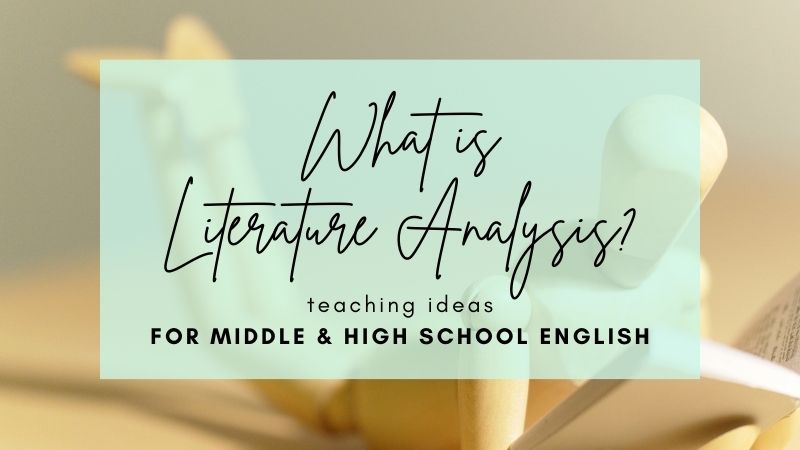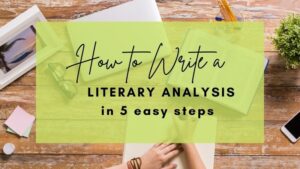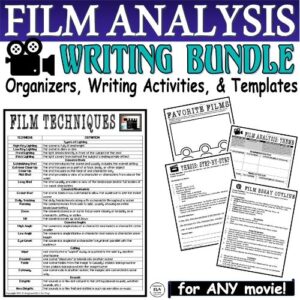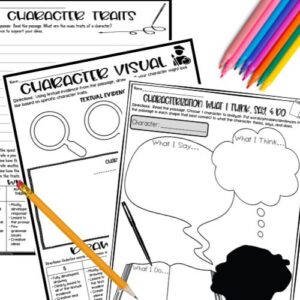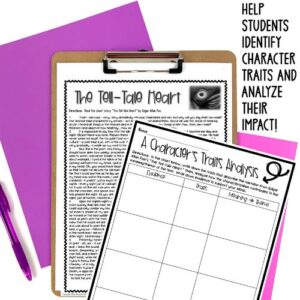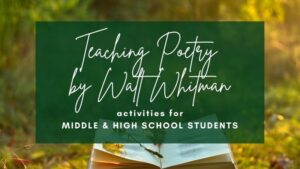Do you find that your students focus a great deal on reading comprehension but struggle to complete literature analysis with the same text? The question “What Is Literature Analysis?” seems easy, but it is hard to teach!
Reading between the lines, digging below the surface, and drawing conclusions requires risk. And risk can be scary, especially for middle school or high school students who may lack confidence in their skills and don’t want to be the first to volunteer information.
But this risk-taking is important to better understand literature because, by drawing conclusions from the work, it can reveal so much about our world, our history, and even more about ourselves!
While we still need to teach expository, argumentative, and narrative writing, we should also ensure that we are incorporating literary analysis into our study of all texts and not just novels. Check out this list below, so you can help your students answer the question: What Is Literature Analysis?
Need help with Test Prep? Check out this FREE Pack of 3 Test Prep Activities to help students achieve success on standardized tests!
What is Literature Analysis?
Literature analysis occurs when the reader considers all of the parts of a work of fiction. By examining character, plot, setting, tone and mood, imagery, and more, a reader can consider how each or all of these parts contribute to the overall novel. The goal is often to come to conclusions about what the story is all about and what it reveals to the reader.
Literary analysis is different from writing other types of essays because the information is often inferred rather than explicitly stated. An essay contains a thesis and then supporting points for that thesis; this is not the same in a work of fiction. You cannot simply point to paragraph 2 on page 3 and say that’s what this story is about; whereas you could point to the introduction of an essay and declare this sentence is the thesis.
As a result, analyzing a work of fiction requires more work below the surface and consideration of all of its parts to draw conclusions.
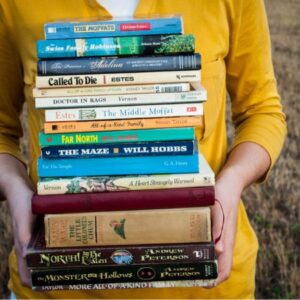
Lit We Can Analyze by asking What Is Literature Analysis?
Literary analysis typically focuses on fiction; otherwise, it falls into the category of rhetorical analysis. Rhetorical analysis focuses on how an author or speaker uses appeals to the audience to effectively communicate a message.
And there are tons of options that fall under the category of fiction that can be used for literary analysis in your classroom. These options include narratives, short stories, poetry, novels, songs, plays, etc. All of these are options that can expand your students’ understanding of their world and themselves!
Want to teach your students how to write a literary analysis essay? Check out 5 NO SWEAT STEPS for Teaching Literary Analysis!
Types of Literature Analysis that help with answering “What Is Literature Analysis?”
There are many schools of thought regarding analysis and layers of where to start depending on student ability. They vary in difficulty but with proper scaffolding, students can move through these levels without feeling like they’re taking too many risks! Start with the question “What Is Literature Analysis?” and go from there.
Here are seven types of analysis that can be used for any text when asking “What is Literature Analysis?”:
1. Mood
Starting with mood is an ideal entry point for literature analysis since it asks the readers how they feel about what’s in the work or how it’s communicated. Tone on the other hand is a bit more challenging since it asks the reader to consider how the story is supposed to make the reader feel. This is a slight differentiation but an important one.
One way to introduce mood is to use feature films or short films. For example, an action movie might prompt a mood that is amused, high energy, and curious, while a WWII drama might be sad and gloomy. This movie analysis activity pack can help make this lesson happen in a way that’s highly engaging for students and no prep for teachers!
2. Characterization
Focusing on characters is the next level of analysis. Students can identify the traits of a character–primary or secondary–and/or how a character changes throughout the text. Make examining character traits simple and easy for any passage with this Graphic Organizer Pack for characterization. It will help middle and high school students examine how the author uses textual evidence for a specific purpose beyond the question “What is Literature Analysis?”.
3. Devices or Figurative Language
The examination of devices in fiction and their effect(s) and purpose shifts literary analysis to an area of the writer’s craft. How does a metaphor reveal more about a setting? What does a character’s use of alliteration reveal about them? These questions added to “What Is Literature Analysis?” and more can drive this area of analysis.
Use this approach in the analysis of “The Gift of the Magi” by considering O. Henry’s figurative language in telling the story. This activity pack for the story is differentiated for students and provides everything a teacher needs to make teaching easier!
4. Theme
This is where things can get a bit trickier for students especially when asking “What is literature analysis?”. Theme asks students to combine their knowledge of mood, characterization, and devices to determine how each contributes to the theme, or message, of a story.
Try this out in your class with any story, though “The Tell-Tale Heart” by Edgar Allan Poe is a student favorite. Use this literary analysis essay outline assignment once students have read the story. The resource will help them to examine characters, settings, devices, etc. to determine a central theme, and then use supporting evidence from the story to write a literary essay.
5. Author Study or Writer’s Craft
Another area of focus can be the writer’s craft and one of the best ways to do this is to focus on more than one story by the same author. In this way, students will be able to analyze the ‘how’ of writing and not just what is written.
One author my students love and whose craft is notable is Ray Bradbury. Stories choices such as “The Pedestrian” and “The Veldt” with their dystopian focus on technology provide a firm basis for analysis of an author and their craft. Check out this resource that will walk students through pre-reading activities all the way to essay prompts that allow for answering the question “What Is Literature Analysis?” with a focus on technology.
Need help with teaching poetry that will help your students answer the question “What Is Literature Analysis?” Check out this post focused on 3 poems by Walt Whitman!
6. Comparative
In the same vein as an author study, you could incorporate the analysis of more than one text. It could be texts written by the same author or texts with a similar theme or written in the same time period. The options for pairing texts are nearly endless!
The benefit of using a literature analysis for more than one text is that it flexes students’ skills with compare and contrast. This approach asks students to find both similarities and differences between texts, which requires both close reading and critical thinking.
Make life easy with this comparative analysis with essay assignment pack. It features four texts with a shared theme of taking revenge but it is adaptable for other texts too.
7. Literary Lens
Teaching the literary lens can be one of the more challenging aspects of literary analysis because it requires students to understand more terminology, history, and context within and beyond the novel. When you want to incorporate this theory, answering the question “What Is Literature Analysis?” can become more difficult!
One literary lens that is an ideal starting point is Reader Response, which focuses on the reader’s response to the text. It takes into account the background knowledge and experience of students and what they bring to a particular text. Plus, what students complete in terms of analyzing mood and character can form the basis of analysis through a reader response lens.
From there, students might explore a variety of other theories including gender, race, Marxism, feminism, and so on. These are definitely meant for high school students since it requires a solid foundation in the analysis of a text on its own before adding in this secondary element. But the great thing about literary lenses is that they can be combined with many of the ideas above, which makes this an achievable and adaptable option.
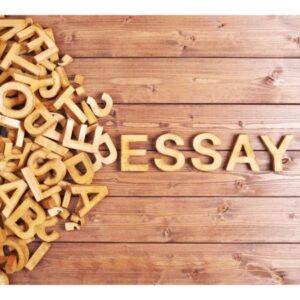
Why should we help students answer the question “What Is Literature Analysis?”
Knowing how to read and examine literature closely is relevant today because it applies to more than just studying a text in English class. It is fundamental to answer the question “What is Literature Analysis?” because the process involves a series of skills including inferencing, drawing conclusions, thinking critically, and communicating effectively. While it might be called literature analysis, it really does encompass so much more.
Our students NEED this exposure as they will be required to analyze complex texts throughout their lives! Have you read a tax document lately or a voting ballot or directions for furniture? Need I say more?
Need more ideas for English Lesson Plans for Teachers that help to answer the question: What is Literature Analysis? Check out my store Kristin Menke-Integrated ELA Test Prep!

